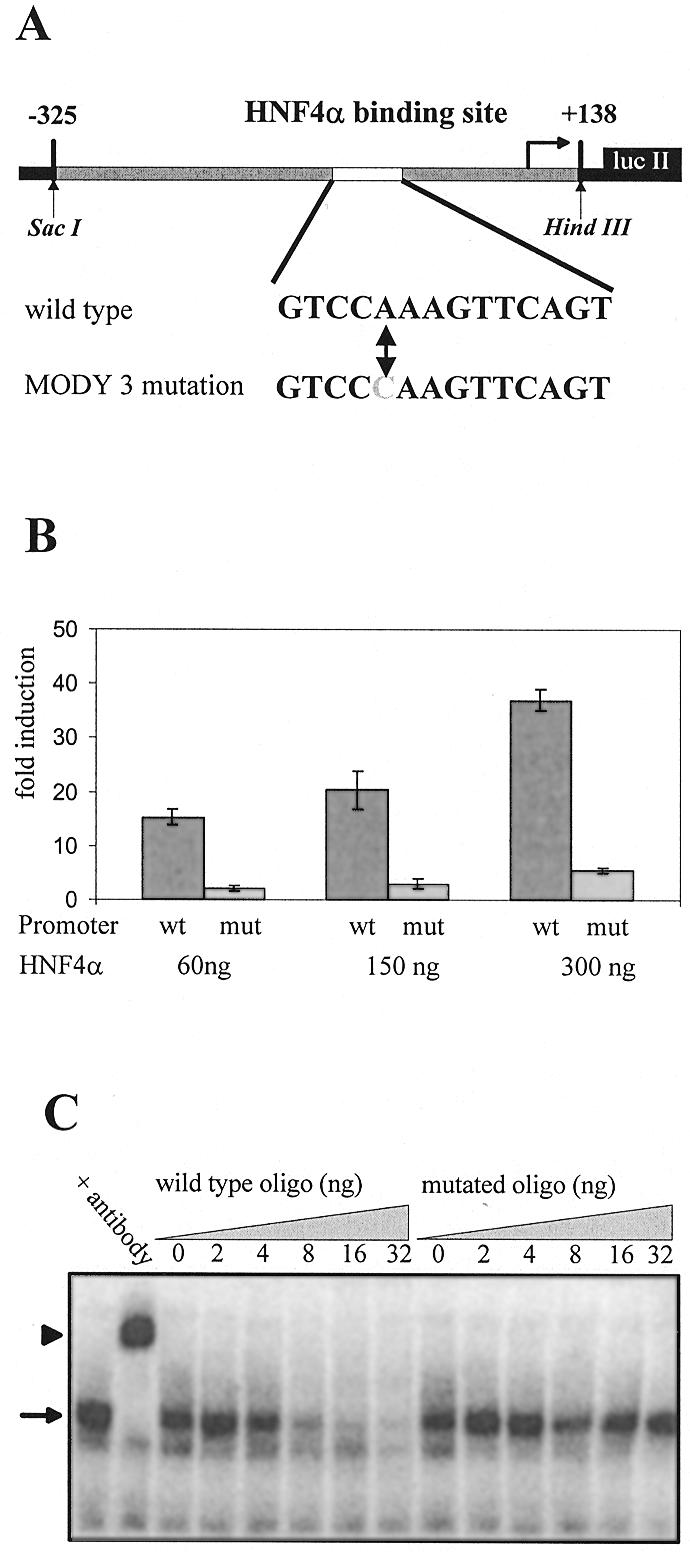Figure 2.

The MODY3 mutation of the HNF4 binding site in the HNF1α promoter results in a loss of function. (A) Schematic representation of the hHNF1(–325/+138)lucII construct containing the human HNF1α promoter is given. The HNF4 binding site with the MODY3 mutation at –58 of the human HNF1α promoter (29) is marked. (B) Comparison of transactivation of the wild-type (wt) and mutant (mut) HNF1α promoter in transient transfection assays by increasing amounts of expression vector encoding wild-type HNF4α in HeLa cells. The total amount of transfected DNA was adjusted by adding pOP13 vector DNA. Fold induction refers to the activity seen without HNF4α expression vector. The error bars indicate the standard deviation of six determinations. (C) Gel shift experiments were done with 0.5 µl of rat liver extract using a labelled HNF4 binding site as probe. The retarded DNA–protein complex and the supershift obtained by an HNF4α-specific antibody are marked with an arrow and an arrowhead, respectively. The addition of increasing amounts of unlabelled wild-type or mutated oligonucleotide representing the HNF4 binding site in (A) is given.
